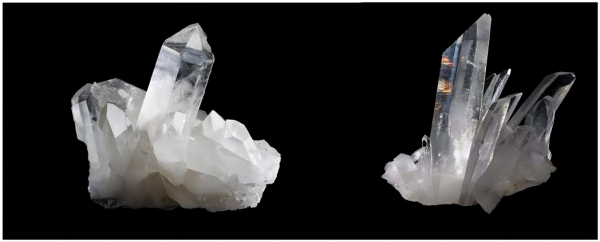
High-purity quartz is mostly used in emerging industries, and its national standard is: white particles with a certain degree of transparency, no color; the particle size of quartz sand should be within the range of 70-350 μm, and the cumulative mass fraction within this particle size range It should be greater than or equal to 90%, and the cumulative mass fraction of particle size less than 100 μm or greater than 300 μm should be less than 1%; the content of silicon dioxide should be greater than or equal to 99.99%, and the loss on ignition should be less than or equal to 0.01%; impurity elements The content should be less than or equal to 25 μg/g, and the sum of potassium, lithium and sodium content should be less than 2.5 μg/g. The high-purity quartz used at this stage is mainly produced by processing and purifying natural crystal, quartz sandstone, vein quartz, etc.
High-purity quartz should have three characteristics at the same time: one is the purity feature, the most prominent feature of high-purity quartz is the high purity of SiO2, and any other components except SiO2 are harmful impurities; Important indicators, the range is generally 40 to 150 mesh, and the specific particle size should be determined according to industrial applications; the third is the phase characteristics, the phase of high-purity quartz is the crystal phase, and they are all quartz single mineral crystals with very high crystallinity. At present, the industrial types of ore deposits that can be used as high-purity quartz raw materials mainly include natural crystal, vein quartz and granite pegmatite quartz.
High-purity quartz has a wide range of applications, and its products are various, mainly used in electric light source, semiconductor industry, quartz glass, optical communication, aerospace and other industries.
High-purity quartz in the semiconductor industry is mainly used to prepare quartz crucibles and as auxiliary materials for wafer processing: quartz crucibles are used to grow single crystal silicon, and are indispensable containers in the semiconductor industry. The wafer processing part is etched, diffused, oxidized, and annealed. A large number of high-purity quartz auxiliary materials such as quartz slices, quartz rings, and quartz boats are used in other processes. In different processes, higher-purity quartz can effectively prevent secondary pollution of chips; in the photovoltaic industry, due to high-purity quartz With the advantages of small thermal expansion coefficient, good thermal stability, good electrical properties and corrosion resistance, it can be used in the photovoltaic industry to draw large-diameter single crystal silicon and polycrystalline silicon as solar cell materials; in the optical field, high-purity quartz can be used to manufacture micro-optical Lenses, prisms, reflectors, etc. of instruments or mechanical systems can also be used in the manufacture of high-performance lamps, such as ultraviolet lamps, mercury lamps, halogen xenon lamps, and high-intensity discharge lamps; in the optical fiber communication industry, high-purity silica fibers have longer transmission distances , faster speed, lower signal loss rate, not affected by electromagnetic signals, etc., can better and faster meet the needs of information sending and receiving.
